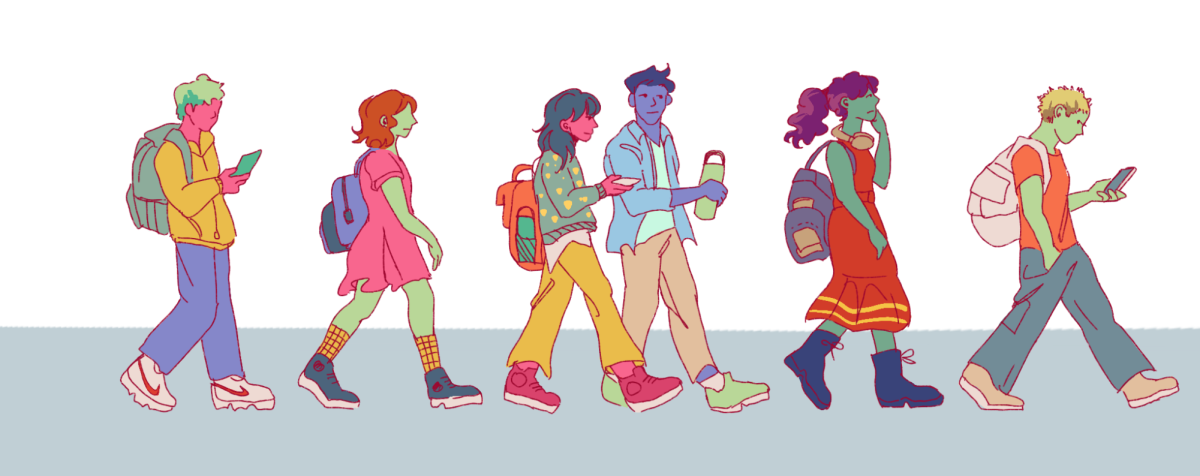As acceptance rates increase, LASA hallways have become congested, school commute traffic has increased, and classes sizes have become bigger. For some teachers, this has led to higher workloads and an even more demanding responsibility with some teachers having entire days without free periods.
As a result of the new campus, classes have increased greatly compared to previous years. The class of 2024, which spent their freshman year on the LBJ campus, for instance, had around 20 students per class. Now, classes have around 30 students in each class period. The new class sizes have affected the teachers’ daily execution and grading, especially Jon Croston’s Physics Right classes, which spend A-days in the theater because of large class sizes.
“It’s still early in the year,” Croston said. “It’s the first time I’ve done this. Right now I’m more used to the small classes, so I prefer the small classes.”
Inside Croston’s physics classes in the theater are more than 50 students per period. Junior Henry Strandwitz is one of these students who expands on the idea of distractions in class being able to be managed personally. According to Strandwitz, a large part of distraction depends on your neighbors, therefore choosing who you sit next to is vital to success.
“I think that being able to choose where you sit makes the experience more enjoyable for you and your friends, if you really want to sit next to them,” Strandwitz said. “But I think it also gives you the responsibility to make good decisions on who you sit next to and [that matters] in a tough class like physics.
Much like his student, Croston feels some of the same sentiment about his classes in the theater. They both agree the theater can be more distracting for students than a regular classroom.
“[Bigger class sizes] makes more of a responsibility to the students to stay engaged rather than teachers keeping them engaged,” Croston said.
Not only do the new class sizes call for a greater commitment to academic honesty, but according to AP U.S. History teacher Kimberely Pettigrew, they also put more pressure and migraine-inducing situations on faculty.
“I already feel behind in terms of grading and we are only four weeks into the school year,” Pettigrew said. “It makes it harder for me to give students the help they need in class when I have 30 in a class, and it takes longer for me to learn everyone’s name. It might not seem like much, but a few students more in each class adds up over 6 classes.”
According to Pettigrew, as well as larger class sizes making grading difficult, it also makes it harder for students to focus. She noticed that recently there has been a rise in side conversations resulting in the students to be more distracted. hall
“I honestly cannot think of any benefit to having a larger class,” Pettigrew said. “It all seems to be downsides to me. I have more students to grade for, document accommodations and progress on skills, and it’s harder for students to receive individual attention.”
Overall, Pettigrew emphasized that the new class size is a resoundingly negative addition to the new school year. However, although she believes small classes create a better overall learning experience, Pettigrew thinks that this is a change staff and students are going to need to get used to.
“I do think a smaller class is better for most students in terms of focus and engagement,” Pettigrew said. “Sadly I don’t think we will be returning to smaller class sizes anytime soon.”








